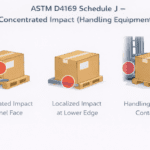Bioburden testing serves as a critical control point for any medical device manufacturer using terminal sterilization. But one of the most common questions I get from regulatory and quality professionals is: “How often should we be testing?”
The standard answer is often “quarterly” or “per batch”, but the more accurate answer is that it depends.
A risk-based approach—supported by ISO 11737-1:2018 and reflected in FDA expectations—means your bioburden testing frequency should be tailored to your process risks, product complexity, and historical data.
Let’s explore how to determine the right frequency for your organization—and how to respond when that cadence needs to change. I’ve also included a diagnostic tool at the end of this article to guide your decision in real time.
Why Bioburden Testing Frequency Matters
Bioburden testing serves as a key element in your microbial control strategy. If done too infrequently, the risks are significant: contamination events may go unnoticed, sterilization validations may be based on outdated data, and regulatory audits can quickly escalate as testing gaps are uncovered.
On the other hand, performing bioburden testing more often than needed can strain resources without yielding additional safety or compliance benefits. Testing frequency should be calibrated—not assumed.
What the Standard Says (ISO 11737-1:2018)
ISO 11737-1 makes it clear that bioburden testing frequency cannot be arbitrary. It states that the frequency “shall be based on the results of historical data and a documented rationale.” In practice, this means that your testing schedule must reflect actual risk, supported by written justification. A fixed schedule, such as quarterly, is acceptable only when that frequency is backed by historical data and trend analysis.
You should regularly reassess this rationale as manufacturing conditions evolve. Frequency must also account for any variables that could influence bioburden levels—especially changes to materials, processes, equipment, or suppliers.
Risk-Based Testing: 5 Factors to Consider
| Factor | Consideration |
| 1. Process Stability | Do your upstream manufacturing steps routinely introduce bioburden variability? |
| 2. Product Complexity | Do you have lumens, porous materials, or irregular surfaces that are hard to clean? |
| 3. Sterilization Validation Approach | Bioburden-based approaches to sterilization validation (commonly used for radiation) require robust controls for bioburden. Overkill approaches (commonly used for ethylene oxide or steam) are more lenient. |
| 4. Previous Test Results | Have you had any spikes or out-of-spec bioburden counts? |
| 5. Change Control Events | Have you introduced new equipment, processes, materials, or suppliers? |
Our Recommendation
For most commercial-stage medical devices operating under a validated sterilization process, quarterly bioburden testing is generally sufficient. This cadence strikes a balance between compliance, control, and operational efficiency—provided that the process is stable and no significant changes have occurred since the last test.
However, if your product or process experiences any risk triggers—such as a supplier change, a material substitution, or an unplanned deviation—it is advisable to increase testing frequency or revalidate your process altogether. In these cases, maintaining a quarterly schedule without adjustment could expose you to avoidable regulatory risk.
It’s also worth noting that any time you encounter a failed sterilization cycle, a spike in bioburden levels, or a manufacturing change that could affect cleanliness, your testing program should respond accordingly. In the eyes of regulators, bioburden testing is not just a routine compliance activity—it is a key performance indicator of maintaining process control.
Try the Bioburden Testing Frequency Diagnostic Tool
To make these principles more actionable, we’ve built a simple interactive tool at the bottom of this blog post. It’s designed to help you determine whether your current testing frequency is still appropriate—or if it’s time to test based on recent changes. Just answer a few quick questions below to get a recommendation in real time.
Final Thoughts
Bioburden testing should never be reduced to a set-it-and-forget-it calendar task. It is a living part of your quality system and a primary indicator of your microbial control status. While quarterly testing is a good starting point for many manufacturers, a truly risk-based program requires ongoing evaluation.
If you’re unsure whether your testing frequency still makes sense—or need help adjusting your sampling plan—reach out to our team. We’ve helped hundreds of medical device manufacturers build rational, audit-ready bioburden programs grounded in standards and science.





